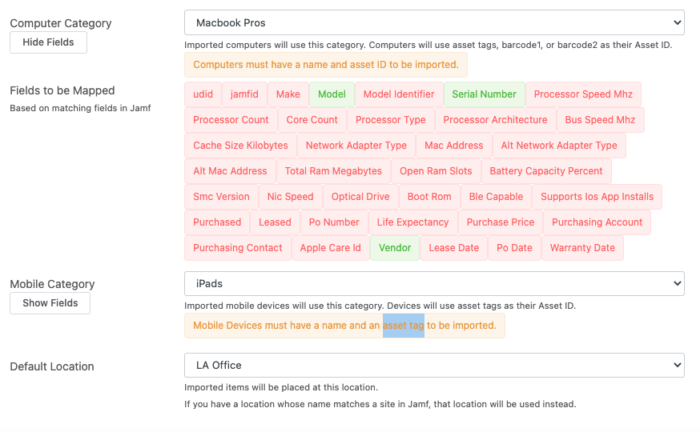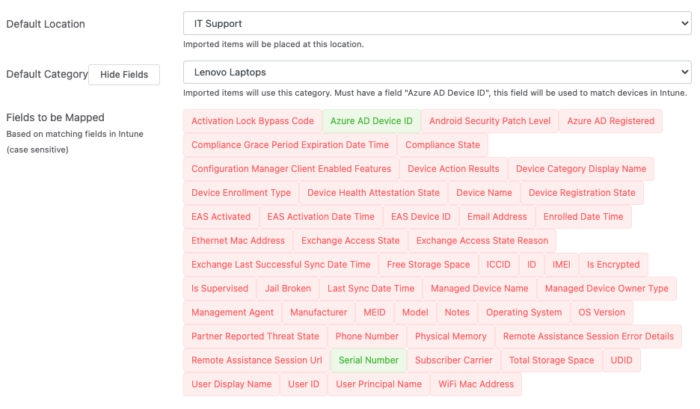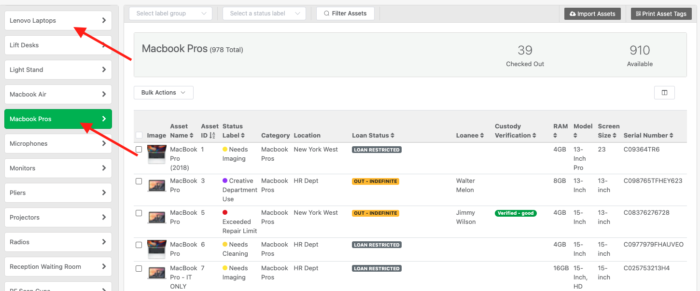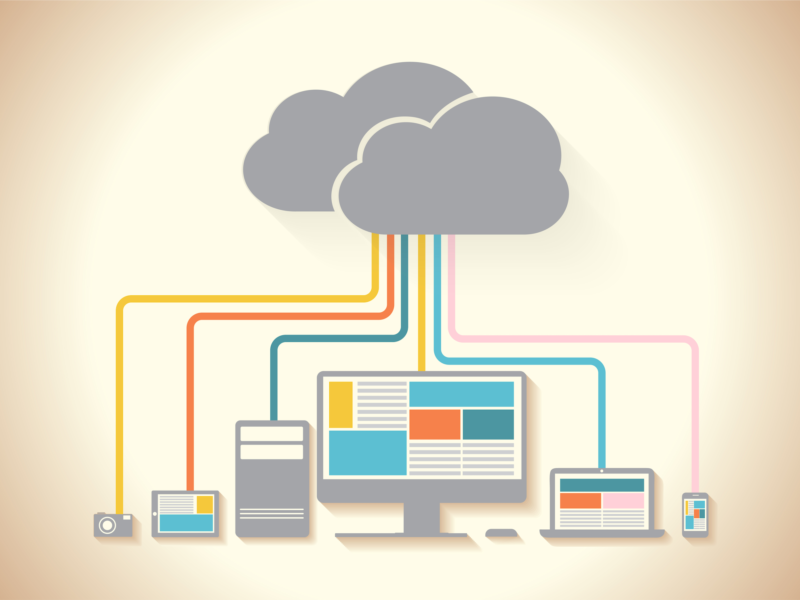Whether you are a large financial institution, an enterprise technology firm, or a large school or university, you have at least one thing in common.
You own a lot of expensive gear and equipment in the form of laptops, monitors, cameras, furniture, film / video equipment, tech accessories, staff badges, and much more.
Between spreadsheets, Jamf, and Microsoft Intune, keeping track of all the equipment, including who it is assigned to, as well as device updates, can be a full-time job for multiple people in your IT department.
A simpler method is to use asset management software that integrates with QR codes and barcodes. This can provide a holistic view where you can see all the assets you own and manage the process of checking gear in and out more efficiently and with fewer errors.
In this post, we’re sharing how you can use Reftab with Microsoft Intune and Jamf to manage all of your company’s assets.
- Connecting Jamf to Reftab
- Connecting Microsoft Intune to Reftab
- How these two integrations can help your IT department
Connecting Jamf to Reftab
If you are using Jamf to manage all of your company’s iOS devices, connecting Jamf to Reftab is simple.
The 80:20 version is you’ll go to the integration section under settings in Reftab and click, “configure”. You’ll be prompted for your Jamf server settings.
Note: This is a read-only account so that Reftab can pull in all of the devices logged in Jamf. Then, you can sync the categories in Jamf with Reftab.
For example, you can say something like when I get a list of Macs from Jamf, put them into the Reftab category of MacBook Pros.
You can also map specific fields. So, not only can you log MacBook Pros, but you also bring over the details like vendors, serial number, MAC address, warranty dates, etc.

So, you can have a single source of truth for all of your device management and details within Reftab. This means when you find a random laptop in a conference room, you can scan the asset tag with the Reftab app. You can see all of the information—no need to power on the machine or anything.
Connecting Microsoft Intune to Reftab
For PC organizations, the process works similarly for Microsoft Intune.
The 80:20 version is you’ll go to the Reftab integration section, add in your details, and click configure.

You’ll be able to pull in all of your Microsoft laptops and devices. For example, you can create a category in Reftab for Lenovo computers. Then, you can also set up and map various fields, including serial numbers, operating system version, whether or not the machine is jailbroken, current logged-in user, etc.
Click here for detailed instructions on how to configure Reftab as an App in Intune: https://www.reftab.com/faq/ms-intune-integration-guide/
How these two integrations can help your IT department
Reftab is a platform-agnostic software that allows you to see and manage all of your PC, Apple, and Linux devices.

This allows you to create asset IDs to track all of your equipment and establish a bridge between the physical and digital.
Here are just a few benefits of using these integrations.
Save time tracking and maintaining equipment
Whether you are tracking equipment assigned to different users or assets across different locations, you can manage all of your devices under one view in Reftab.
In fact, Reftab customers save an average of 7 hours per week on administrative tasks related to tracking and maintaining equipment.
For example, in Reftab, you see more than just iOS devices in Jamf. You are seeing all of the iOS and Android devices along with everything else your company owns like Lenovo computers, Macbook Pros, printers, monitors, headsets, your docking stations, office furniture, and anything else.
You can also automatically log maintenance requests and send an email to a specific user to confirm they still have custody over the equipment you loaned them.
It also makes the process of preparing gear for new employees simpler. You don’t have to worry about looking up information in different systems, figuring out what’s unassigned, and then trying to guess what type of machine and software the new hire needs.
If you are using Reftab and know the department the new employee is in, you can simply search, “creative department”. Then, you can see new employees in that department need this specific Macbook Pro, Creative Cloud software pre-installed, and so forth. You can also quickly look up if there is an unassigned computer that you assign to the new employee instead of having to buy new.
Reduce the number of data entry tasks
Your IT team can spend more time on strategic initiatives and high-level tasks instead of manually updating information in spreadsheets, paper forms, etc.
For example, when you loan equipment to a team member, you can use your phone to scan a barcode on the item(s) when it is checked in and out. It will instantly update in the software.
Spend less time building custom reports
Whether you are just running standard inventory and equipment reports or going through a routine audit, reporting can take a ton of time.
If you have all of your equipment in asset management software, like Reftab. You can automate these reports.
For example, you can get a notification when a specific device has a low quantity.
Or, if you have a hybrid or fully remote team, you can log into Reftab and automatically see how many devices have been assigned, which team members currently have access to what equipment, or if you have an unassigned computer that you can give to the new hire that’s starting – instead of having to buy new.
That’s where having asset management software comes in because it provides a multi-system view to see which devices are assigned, what devices aren’t assigned to anyone, what devices are currently out of service, etc.
***
In sum, managing all of your company’s assets shouldn’t require you to jump between multiple software and spreadsheets. Using asset management software that syncs with Microsoft Intune and Jamf makes this process a lot simpler.
Ready to get started? Try Reftab for free.
